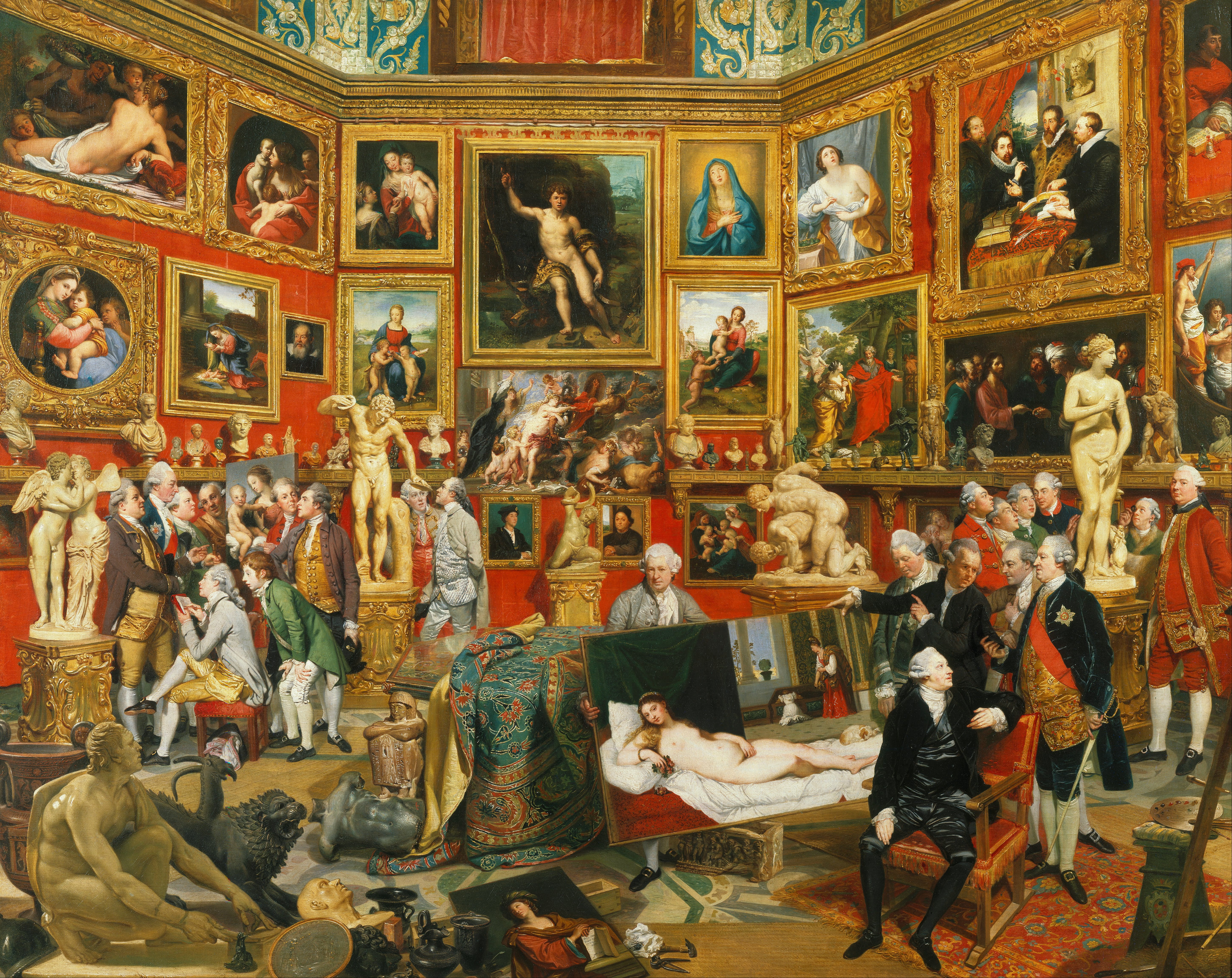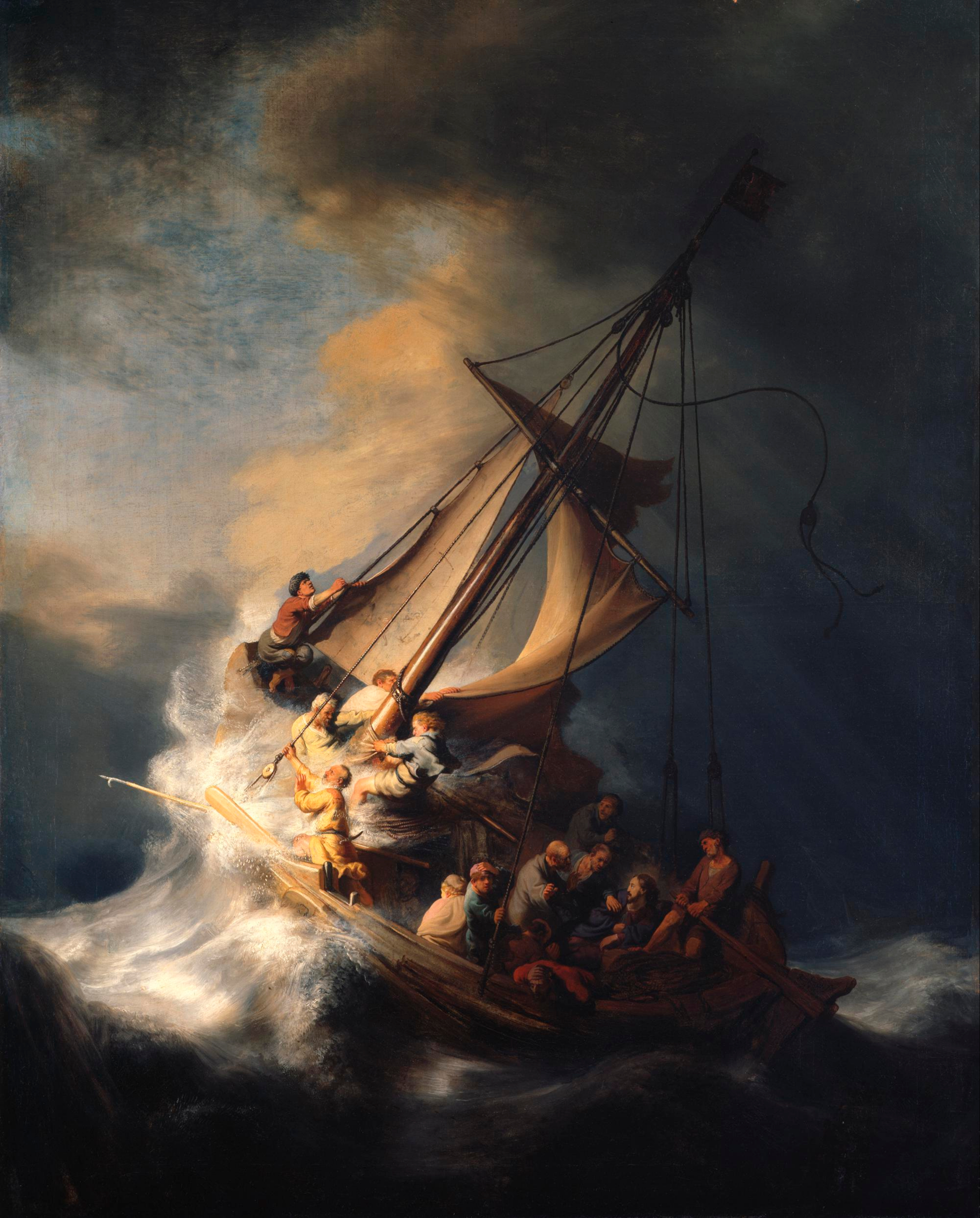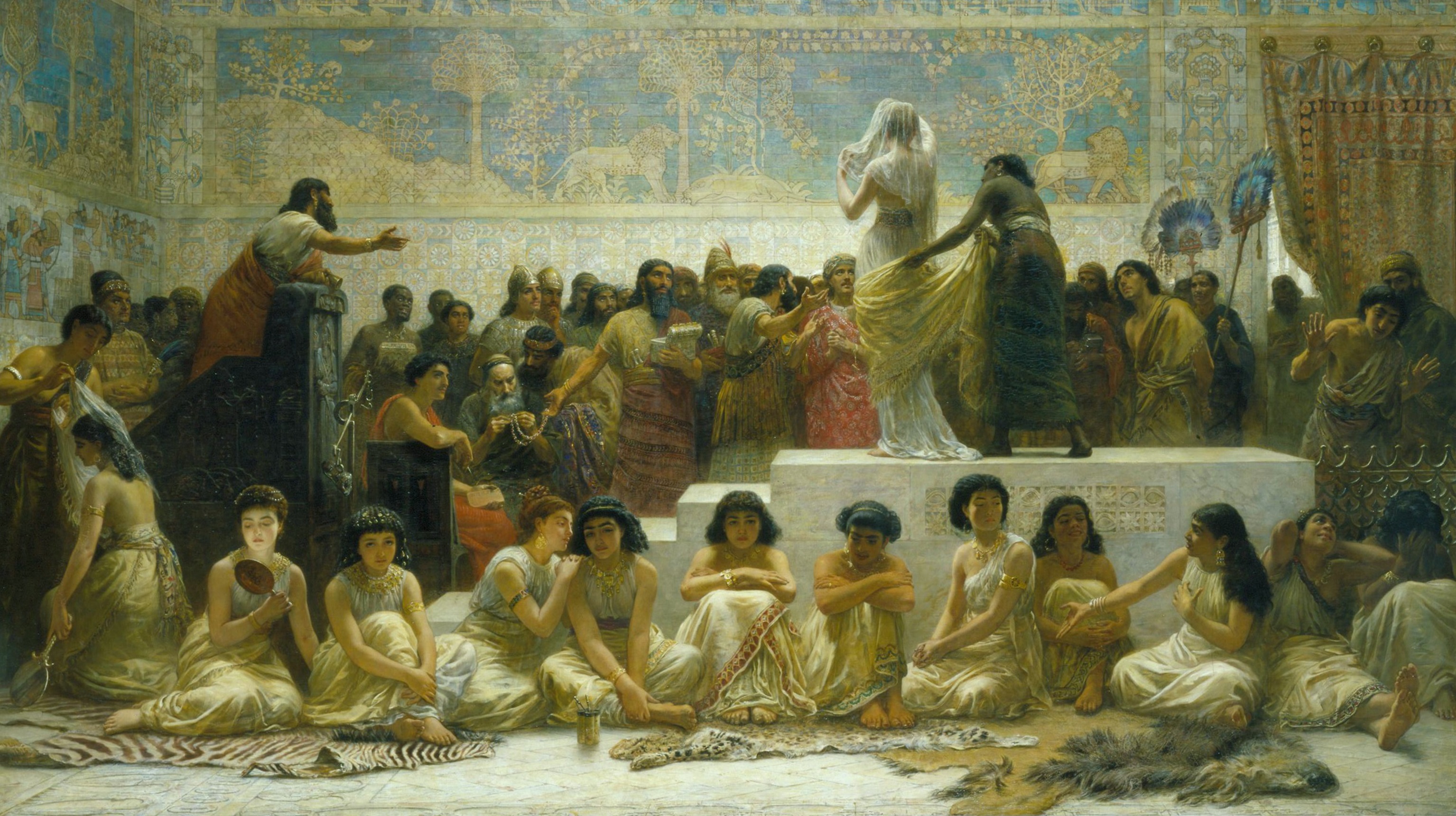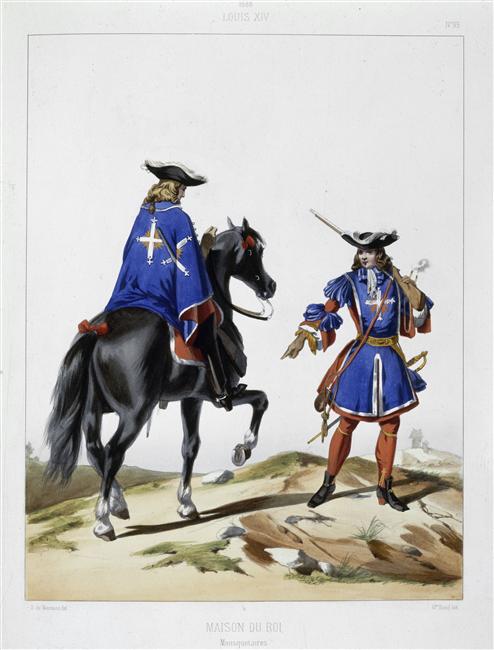|
The Art Gallery Of Jan Gildemeester Jansz
''The Art Gallery of Jan Gildemeester Jansz'' is a painting created by the Dutch painter Adriaan de Lelie in 1794-95. It is part of the collection of the Rijksmuseum Amsterdam, executed in oil paint on panel. It depicts the art collector Jan Gildemeester Jansz (or Jan Jansz. Gildemeester) in the midst of his large collection of paintings, showing them to friends. The painting was acquired by the Rijksmuseum in 1964 after being part of a French private collection. Art historical context and inspiration Konstkamers According to the art historian C.J. De Bruyn Knops, the subject of the work - an art collector at home, showing his art collection to his friends - is unique in Northern-Netherlandish painting before 1800. In Flemish ( Southern-Netherlandish) painting, this genre was common in the 17th Century; it was executed by masters like Willem van Haecht, David Teniers, Gillis van Tilborgh and Gonzales Cocques, but in the Northern Netherlands the subject didn't become popular. ... [...More Info...] [...Related Items...] OR: [Wikipedia] [Google] [Baidu] |
Adriaan De Lelie
Adriaan de Lelie (19 May 1755 – 30 November 1820)Lelie, Adriaan de in the was a painter. He was born in . De Lelie was a pupil of A. Peeters, a painter of tapestries and ornaments, and afterwards of Andreas Bernardus de Quertenmont in Antwerp. He made copies of many portraits by [...More Info...] [...Related Items...] OR: [Wikipedia] [Google] [Baidu] |
Johan Zoffany
Johan Joseph Zoffany (born Johannes Josephus Zaufallij; 13 March 1733 – 11 November 1810) was a German neoclassical painter who was active mainly in England, Italy and India. His works appear in many prominent British collections, including the National Gallery, the Tate Gallery and the Royal Collection, as well as institutions in continental Europe, India, the United States and Australia. His name is sometimes spelled Zoffani or Zauffelij (on his grave, it is spelled Zoffanij). Life and career Of noble Hungarian and Bohemian origin, Johan Zoffany was born near Frankfurt on 13 March 1733, the son of a cabinet maker and architect in the court of Alexander Ferdinand, 3rd Prince of Thurn and Taxis. He undertook an initial period of study in a sculptor's workshop in Ellwangen during the 1740s, possibly the shop of Melchior Paulus, and later at Regensburg with the artist . In 1750, he travelled to Rome, entering the studio of Agostino Masucci. In the autumn of 1760, he arrived ... [...More Info...] [...Related Items...] OR: [Wikipedia] [Google] [Baidu] |
Still Life
A still life (plural: still lifes) is a work of art depicting mostly wikt:inanimate, inanimate subject matter, typically commonplace objects which are either natural (food, flowers, dead animals, plants, rocks, shells, etc.) or artificiality, man-made (drinking glasses, books, vases, jewelry, coins, pipes, etc.). With origins in the Middle Ages and Ancient Greco-Roman art, still-life painting emerged as a distinct genre and professional specialization in Western painting by the late 16th century, and has remained significant since then. One advantage of the still-life artform is that it allows an artist much freedom to experiment with the arrangement of elements within a composition of a painting. Still life, as a particular genre, began with Netherlandish art, Netherlandish painting of the 16th and 17th centuries, and the English term ''still life'' derives from the Dutch word ''stilleven''. Early still-life paintings, particularly before 1700, often contained religious and al ... [...More Info...] [...Related Items...] OR: [Wikipedia] [Google] [Baidu] |
Animal Painter
An animal painter is an artist who specialises in (or is known for their skill in) the portrayal of animals. The ''OED'' dates the first express use of the term "animal painter" to the mid-18th century: by English physician, naturalist and writer John Berkenhout (1726-1791). From the early 20th century, ''wildlife artist'' became a more usual term for contemporary animal painters. History Especially in the 17th century, animal painters would often collaborate with other artists, who would either paint the main subject in a historical or mythological piece, or the landscape background in a decorative one. Frans Snyders, a founder of the Baroque animal painting tradition, often provided the animals, and also still lifes of food, for Peter Paul Rubens; a different landscape specialist might provide the background. The paintings by Snyders and his workshop alone typically lack humans, except in kitchen scenes, and usually show a number of animals of different species (or breeds o ... [...More Info...] [...Related Items...] OR: [Wikipedia] [Google] [Baidu] |
Landscape Painting
Landscape painting, also known as landscape art, is the depiction of natural scenery such as mountains, valleys, trees, rivers, and forests, especially where the main subject is a wide view—with its elements arranged into a coherent composition. In other works, landscape backgrounds for figures can still form an important part of the work. Sky is almost always included in the view, and weather is often an element of the composition. Detailed landscapes as a distinct subject are not found in all artistic traditions, and develop when there is already a sophisticated tradition of representing other subjects. Two main traditions spring from Western painting and Chinese art, going back well over a thousand years in both cases. The recognition of a spiritual element in landscape art is present from its beginnings in East Asian art, drawing on Daoism and other philosophical traditions, but in the West only becomes explicit with Romanticism. Landscape views in art may be entirely ... [...More Info...] [...Related Items...] OR: [Wikipedia] [Google] [Baidu] |
Marine Art
Marine art or maritime art is a form of figurative art (that is, painting, drawing, printmaking and sculpture) that portrays or draws its main Sea in culture, inspiration from the sea. Maritime painting is a genre that depicts ships and the sea—a genre particularly strong from the 17th to 19th centuries. In practice the term often covers art showing shipping on rivers and estuaries, beach scenes and all art showing boats, without any rigid distinction - for practical reasons subjects that can be drawn or painted from dry land in fact feature strongly in the genre."Grove": Cordingley, D., ''Marine art'' in Grove Art Online. Accessed April 2, 2010 Strictly speaking "maritime art" should always include some element of human seafaring, whereas "marine art" would also include pure seascapes with no human element, though this distinction may not be observed in practice. Ships and boats have been included in art from almost the earliest times, but marine art only began to become a d ... [...More Info...] [...Related Items...] OR: [Wikipedia] [Google] [Baidu] |
Genre Painting
Genre painting (or petit genre), a form of genre art, depicts aspects of everyday life by portraying ordinary people engaged in common activities. One common definition of a genre scene is that it shows figures to whom no identity can be attached either individually or collectively, thus distinguishing it from history paintings (also called ''grand genre'') and portraits. A work would often be considered as a genre work even if it could be shown that the artist had used a known person—a member of his family, say—as a model. In this case it would depend on whether the work was likely to have been intended by the artist to be perceived as a portrait—sometimes a subjective question. The depictions can be realistic, imagined, or romanticized by the artist. Because of their familiar and frequently sentimental subject matter, genre paintings have often proven popular with the bourgeoisie, or middle class. Genre subjects appear in many traditions of art. Painted decorations in anc ... [...More Info...] [...Related Items...] OR: [Wikipedia] [Google] [Baidu] |
Auction Catalog
An auction catalog (US spelling) or auction catalogue (British spelling) is inventory of listing of items to be sold at an auction. It is made available some time before the auction date. Auction catalogs for rare and expensive items, such as art, books, jewelry, postage stamps, furniture, wine, cars, posters, published for sales around the world, can be of interest in themselves--they will can include detailed descriptions of the items, their provenance Provenance (from the French ''provenir'', 'to come from/forth') is the chronology of the ownership, custody or location of a historical object. The term was originally mostly used in relation to works of art but is now used in similar senses i ..., historical significance, photographs, and even comparative analyses and descriptive essays by subject experts. In some cases, auction catalogues are key documentation for rare objects that are in private collections, and make up an important part of the libraries for students of m ... [...More Info...] [...Related Items...] OR: [Wikipedia] [Google] [Baidu] |
Auction
An auction is usually a process of buying and selling goods or services by offering them up for bids, taking bids, and then selling the item to the highest bidder or buying the item from the lowest bidder. Some exceptions to this definition exist and are described in the section about different types. The branch of economic theory dealing with auction types and participants' behavior in auctions is called auction theory. The open ascending price auction is arguably the most common form of auction and has been used throughout history. Participants bid openly against one another, with each subsequent bid being higher than the previous bid. An auctioneer may announce prices, while bidders submit bids vocally or electronically. Auctions are applied for trade in diverse contexts. These contexts include antiques, paintings, rare collectibles, expensive wines, commodities, livestock, radio spectrum, used cars, real estate, online advertising, vacation packages, emission trading, a ... [...More Info...] [...Related Items...] OR: [Wikipedia] [Google] [Baidu] |
Jurriaan Andriessen (artist)
Jurriaan Andriessen (12 July 1742, Amsterdam - 31 July 1819, Amsterdam) was a Dutch decorative painter and graphic artist. Biography His father was from Brandenburg and his mother was from Holstein. He began his art studies at the age of twelve with the decorative painter Anthony Elliger. Four years later, he worked with Jan Maurits Quinkhard.Profile in the Rijksbureau voor Kunsthistorische Documentatie. In 1760, he attended the Technical School in Amsterdam and was awarded first prize for his graduation work in 1766. That same year, he was accepted as a member of the Guild of Saint Luke and received a major order for wall decorations at the Huis te Manpad in Heemstede. He worked with Johannes van Dreght and Reinier Vinkeles. In 1770, he was married. The couple settled in Amsterdam, where he and opened a workshop for making painted wallpaper. [...More Info...] [...Related Items...] OR: [Wikipedia] [Google] [Baidu] |
Tricorne
The tricorne or tricorn is a style of hat that was popular during the 18th century, falling out of style by 1800, though actually not called a "tricorne" until the mid-19th century. During the 18th century, hats of this general style were referred to as "cocked hats". At the peak of its popularity, the tricorne varied greatly in style and size, and was worn not only by the aristocracy, but also as common civilian dress, and as part of military and naval uniforms. Typically made from animal fiber, the more expensive being of beaver-hair felt and the less expensive of wool felt, the hat's most distinguishing characteristic was that three sides of the brim were turned up (cocked) and either pinned, laced, or buttoned in place to form a triangle around the crown. The style served two purposes: first, it allowed stylish gentlemen to show off the most current fashions of their wigs, and thus their social status; and secondly, the cocked hat, with its folded brim, was much smaller than o ... [...More Info...] [...Related Items...] OR: [Wikipedia] [Google] [Baidu] |
Cornelis Rudolphus Theodorus Krayenhoff
Corneli(u)s Rudolphus Theodorus, Baron Krayenhoff ( Nijmegen, 2 June 1758 – Nijmegen, 24 November 1840) was a physicist, artist, general, hydraulic engineer, cartographer and – against his will and for only a short time – Dutch Minister of War. Biography His father was a hydraulic engineer and soldier in Nijmegen, with brewing as a sideline. Krayenhoff was educated in Nijmegen, Arnhem and Harderwijk. In the latter city he met Herman Willem Daendels, later a fellow-revolutionary. He had been intended to study law, but began to study philosophy and medicine instead (1777–1783). He wrote his dissertations on the '' theory of the imagination'' and a medical survey of the dysentery epidemic that raged in Nijmegen in 1783. He established himself as a physician in Amsterdam, after he had declined an offer of a professorate in medicine at Franeker university. He was a member of the ''Concordia et Libertate'' genootschap and of '' Maatschappij tot Nut van 't Algemeen''. ... [...More Info...] [...Related Items...] OR: [Wikipedia] [Google] [Baidu] |



_-_Bouquet_of_Flowers_in_a_Ceramic_Vase.jpg)







